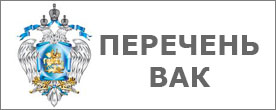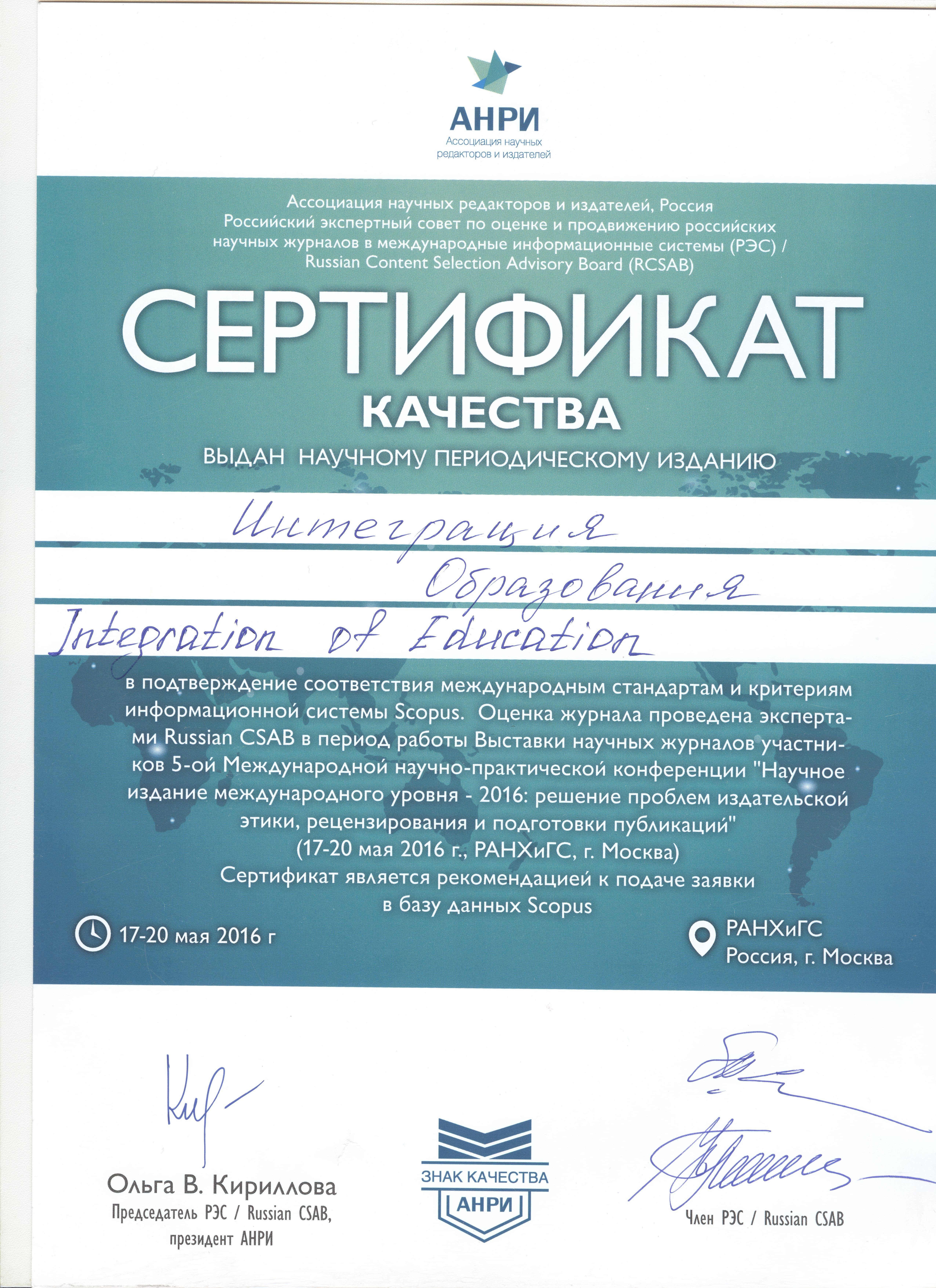UDK 377:316.77-056.262
DOI: 10.15507/1991-9468.103.025.202102.321-339
Development of Communicative Competence in Junior High School Students with Visual Impairment in Different Institutional and Educational Settings
Vitaly Z. Kantor
Vice-Rector for Inclusive Education, Professor of the Chair of Fundamentals of Defectology and Rehabilitation, The Herzen State Pedagogical University of Russia (48 Moika Embankment, Saint Petersburg 191186, Russian Federation), Dr.Sci. (Ped.), Full Professor, ORCID: https://orcid.org/0000-0002-9700-7887, Scopus ID: 57197712404, Researcher ID: Y-6834-2018, This email address is being protected from spambots. You need JavaScript enabled to view it.
Galina V. Nikulina
Head of Chair of Tiflopedagogics, The Herzen State Pedagogical University of Russia (48 Moyka Embankment, Saint Petersburg 191186, Russian Federation), Dr.Sci. (Ped.), Professor, ORCID: https://orcid.org/0000-0001-8601-8655, Scopus ID: 57197722833, Researcher ID: Y-7108-2018, This email address is being protected from spambots. You need JavaScript enabled to view it.
Irina N. Nikulina
Associate Professor of the Chair of Fundamentals of Defectology and Rehabilitation, The Herzen State Pedagogical University of Russia (48 Moika Embankment, Saint Petersburg 191186, Russian Federation), Cand.Sci. (Psychol.), Associate Professor, ORCID: https://orcid.org/0000-0003-2608-1390, Scopus ID: 8891053700, This email address is being protected from spambots. You need JavaScript enabled to view it.
Introduction. The diversification in education means, inter alia, establishing an institutional balance between integration and differentiation, which should also hold true for visually-impaired children. Junior age is a sensitive period for the development of communicative skills. Hence, one of the key tasks on the educational agenda for visually-impaired junior high school students is the development of communicative competence. The paper is the first attempt to identify how institutional and educational setting impacts the development of communicative competence in junior high school students, namely, such aspects of communicative competence as content/compliance with communication standards, attitude/role relationships, position/function, and involvement/activity.
Materials and Methods.The evidence was obtained from four schools in Saint Petersburg and Leningrad Region. The survey included 55 respondents in grades 1‒3 with deferent degrees of visual impairment from inclusive educational settings with partial integration / differentiation. The methodology included such tools as Effective Communication: Raising Awareness of Visually-Impaired Students; a scale-based interview and questionnaire; L. Mikhelson’s Communication Skills test modified by L.S. Kolmogorova; Joint Sorting by G.V. Burmenskaya; and G.A. Tsukerman’s Picture Dictation. The data was processed using Student's t-test for dependent and independent samples and Pearson correlation coefficient.
Results. The assessment of communicative competence in schoolchildren embraced several aspects: content/compliance with communication standards; attitude/role relationships; position/function; involvement/activity. In the context of inclusive education with partial integration and differentiation, visually-impaired junior high school students show different development levels of different aspects of communicative competence. This context has a selective and ambivalent effect.
Discussion and Conclusion. The results may find application in the design and testing of a variable modular programme aimed at the development of communicative competence in visually-impaired junior high school students. The results may also lay the foundation for the rehabilitation and training strategy for visually-impaired students and facilitate their integration in social and educational environment..
Keywords: communicative competence, visually-impaired junior high school students, institutional and educational setting, inclusive education, partial integration in education, differentiation in education, general education school, special education school, aspects of communicative competence: content/compliance with communication standards, attitude/role relationships, position/function, involvement/activity
The authors declare no conflict of interest.
For citation: Kantor V.Z., Nikulina G.V., Nikulina I.N. Development of Communicative Competence in Junior High School Students with Visual Impairment in Different Institutional and Educational Settings. Integratsiya obrazovaniya = Integration of Education. 2021; 25(2):321-339. DOI: https://doi.org/10.15507/1991-9468.103.025.202102.321-339
Contribution of the authors:
V. Z. Kantor – provided conceptual analysis; final processing of data and research results presentation.
G. V. Nikulina – developed a conceptual and theoretical framework of the study; chose testing sites and provided preliminary consolidation of empirical data.
I. N. Nikulina – developed a methodological framework of the study; collected and provided preliminary processing of experimental data.
All authors have read and approved the final manuscript.
Submitted 13.01.2021; approved after reviewing 15.03.2021;
accepted for publication 22.03.2021.

This work is licensed under a Creative Commons Attribution 4.0 License.





























